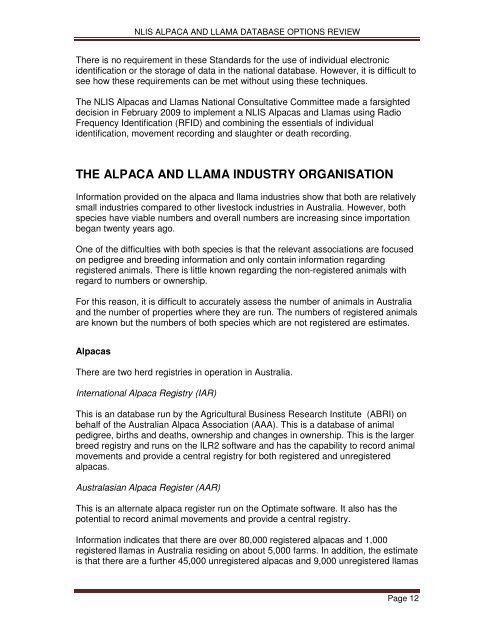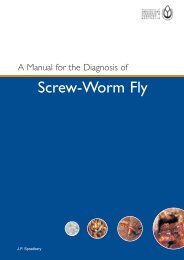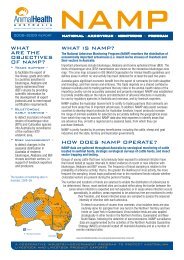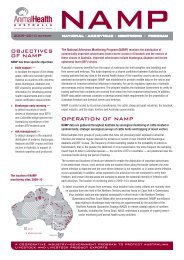National Livestock Identification System Alpaca and Llama ...
National Livestock Identification System Alpaca and Llama ...
National Livestock Identification System Alpaca and Llama ...
You also want an ePaper? Increase the reach of your titles
YUMPU automatically turns print PDFs into web optimized ePapers that Google loves.
NLIS ALPACA AND LLAMA DATABASE OPTIONS REVIEW<br />
There is no requirement in these St<strong>and</strong>ards for the use of individual electronic<br />
identification or the storage of data in the national database. However, it is difficult to<br />
see how these requirements can be met without using these techniques.<br />
The NLIS <strong>Alpaca</strong>s <strong>and</strong> <strong>Llama</strong>s <strong>National</strong> Consultative Committee made a farsighted<br />
decision in February 2009 to implement a NLIS <strong>Alpaca</strong>s <strong>and</strong> <strong>Llama</strong>s using Radio<br />
Frequency <strong>Identification</strong> (RFID) <strong>and</strong> combining the essentials of individual<br />
identification, movement recording <strong>and</strong> slaughter or death recording.<br />
THE ALPACA AND LLAMA INDUSTRY ORGANISATION<br />
Information provided on the alpaca <strong>and</strong> llama industries show that both are relatively<br />
small industries compared to other livestock industries in Australia. However, both<br />
species have viable numbers <strong>and</strong> overall numbers are increasing since importation<br />
began twenty years ago.<br />
One of the difficulties with both species is that the relevant associations are focused<br />
on pedigree <strong>and</strong> breeding information <strong>and</strong> only contain information regarding<br />
registered animals. There is little known regarding the non-registered animals with<br />
regard to numbers or ownership.<br />
For this reason, it is difficult to accurately assess the number of animals in Australia<br />
<strong>and</strong> the number of properties where they are run. The numbers of registered animals<br />
are known but the numbers of both species which are not registered are estimates.<br />
<strong>Alpaca</strong>s<br />
There are two herd registries in operation in Australia.<br />
International <strong>Alpaca</strong> Registry (IAR)<br />
This is an database run by the Agricultural Business Research Institute (ABRI) on<br />
behalf of the Australian <strong>Alpaca</strong> Association (AAA). This is a database of animal<br />
pedigree, births <strong>and</strong> deaths, ownership <strong>and</strong> changes in ownership. This is the larger<br />
breed registry <strong>and</strong> runs on the ILR2 software <strong>and</strong> has the capability to record animal<br />
movements <strong>and</strong> provide a central registry for both registered <strong>and</strong> unregistered<br />
alpacas.<br />
Australasian <strong>Alpaca</strong> Register (AAR)<br />
This is an alternate alpaca register run on the Optimate software. It also has the<br />
potential to record animal movements <strong>and</strong> provide a central registry.<br />
Information indicates that there are over 80,000 registered alpacas <strong>and</strong> 1,000<br />
registered llamas in Australia residing on about 5,000 farms. In addition, the estimate<br />
is that there are a further 45,000 unregistered alpacas <strong>and</strong> 9,000 unregistered llamas<br />
Page 12





